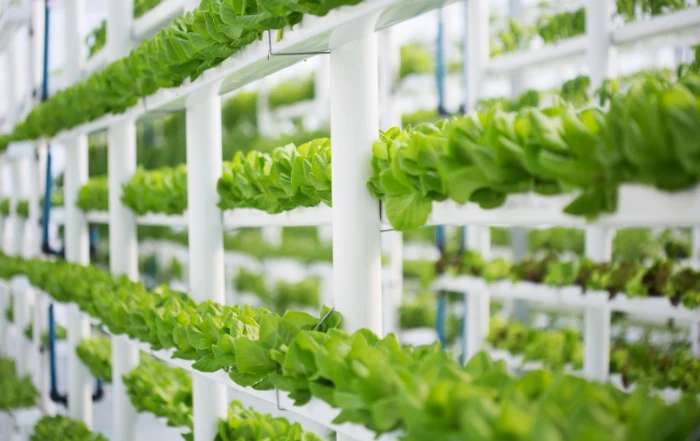The vertical farming industry has recently encountered a series of challenges that have tarnished its once-glowing reputation among the investment community. Controlled environment agriculture (CEA) and vertical farming, previously regarded as promising ventures, are now grappling with significant losses, bankruptcy filings, and even business closures. It’s safe to say that the industry is currently experiencing what can be termed as the “trough of disillusionment.”
So, what led to this downfall?
There are three key issues plaguing the CEA and vertical farming sectors that we can pinpoint:
Easy Money Hindered Efficiency
This predicament wasn’t unique to CEA alone; however, it had a profound impact on an industry that heavily relies on upfront investments and capital expenditures.
During the period of low-to-no interest rates, the industry witnessed a surge in available funds. Venture capital firms and CEA companies alike leveraged this opportunity, acquiring substantial amounts of cash at inflated valuations.
For instance, Agricool, Kalera, Appharvest, Fifth Season, Iron Ox, Infarms, Upward Farms, and Aerofarms, once hailed as pre-2021 darlings, succumbed to heavy losses, bankruptcy, or even complete shutdown.
Flush with capital, most vertical farming enterprises failed to allocate their resources efficiently, neglecting prudent capital expenditure and operational expenditure practices. They expanded their presence and product offerings hastily, without closely monitoring their burn rate.
Many presumed, with some justification, that additional funding could always be obtained.
However, when the interest rate climate shifted, and the funding flow dried up, investors and shareholders demanded expense reductions.
But the growth plans, particularly the existing capital expenditure commitments, left little room for such adjustments. They were confronted with the challenge of achieving greater results (to justify their lofty valuations) with significantly fewer resources (to curtail their burn rate with diminishing cash reserves).
These organizations, which had an excess of employees, were ill-prepared to function in a lean and efficient manner.
In essence, most companies in the CEA sector didn’t prioritize resilience during their expansion; instead, they prioritized convenience. The prevailing economic environment only fueled this behavior.
As the industry matures, it becomes crucial for CEA companies to strike a balance between growth aspirations and financial prudence.
Companies must focus on building resilient operations, employing lean practices, and meticulously planning for sustainable growth in order to withstand the uncertainties and fluctuations of the market.
Reevaluating Business Models and Emphasizing Unit Economics in the Vertical Farming Industry
As recent Chapter 11 bankruptcies emerge in the vertical farming space, a crucial question arises: do these companies possess a fundamentally sound business model that was poorly executed, or is the model flawed from its inception?
When launching a venture, it’s easy to fine-tune the product but misjudge the market size and scalability costs. In a bid to meet these expectations, organizations often accumulate more debt, expand their operations, and broaden their scope.
However, they eventually encounter a growth plateau, where revenue fails to align with projections. Without access to additional capital, these companies reach a critical turning point in their burn rate, which signals trouble.
Entrepreneurs and business leaders are all too familiar with the deep-seated fear associated with this inflection point.
In the vertical farming industry, particularly within CEA ventures influenced by the aforementioned availability of “easy money,” many companies neglected to engage in thorough product-market fit exercises.
While building first and figuring it out later is a typical approach, a wise mentor once shared, “Spend the least amount of money in the beginning because that’s when you make the most mistakes.”
Establishing product-market fit is the first and most crucial step in building a successful venture.
However, this process demands both patience and financial resources. It’s essential to establish the former while securing the latter, to allocate significant resources to technical and commercial proofs of concept.
Unfortunately, many companies in the CEA sector took the reverse approach. They constructed elaborate proofs of concept, such as fully automated 20-acre facilities, without subjecting the “market” aspect of the equation to rigorous testing.
Although it is unfortunate to witness the consequences unfolding in real time, these experiences serve as somber “lessons learned” for the rest of the industry.
Another significant oversight in the growth plans of numerous CEA companies was the absence of positive unit economics. If the unit economics are already in the negative territory (which is an alarming sign), it becomes crucial to determine the “escape velocity” or the sales volume combined with production costs necessary to turn that number positive.
Regrettably, unit economics were not given serious consideration or thorough testing by many CEA and vertical farming enterprises.
On the sales side, these same companies projected prices that consumers would be willing to pay for a head of lettuce, herbs, or berries based on optimistic estimates or loose pricing assumptions. However, they failed to account for the fact that, in the end, it’s just lettuce!
With the onset of inflation and reduced consumer spending, these projections are quickly called into question. If the unit economics for a head of lettuce do not work, the unit economics for a greenhouse or indoor facility also falter, casting doubt on the entire business model.
Some companies attempted to shift their product offerings to higher-margin options like microgreens, mushrooms, or salad kits.
However, this transition requires capital expenditure for additional equipment and processes, as well as time to realign sales teams and merchandising efforts.
All of this must be accomplished in an environment where the burn rate needs to decrease, and runway extension becomes a pressing concern.
Looking Ahead: Advancing CEA and Vertical Farming

Without a doubt, CEA and vertical farming have a promising future. Numerous environmental factors (such as long-term water issues along the Colorado River and climate volatility), supply factors (enduring transportation and labor cost increases), and demand factors (sustained demand for plant-based diets and growing interest in healthy eating) cannot be adequately addressed by traditional agriculture alone.
However, there are areas that require improvement as the industry moves forward.
Strategic Growth, Focus on Fundamentals, and Embracing the Long View in CEA and Vertical Farming
Over the past five years, Eden Green has adopted a deliberate approach, securing patents and meticulously validating technical and commercial proofs of concept.
Within the realm of flat-tray greenhouses in CEA, industry pioneers like Paul Sellew at Little Leaf Farms (founded in 2015) and Viraj Puri at Gotham Greens (founded in 2009) have exemplified a long-term mindset towards growth. Meanwhile, those at Eden Green strive to lead the way in patient expansion within the vertical farming greenhouse segment.
For “black box” indoor vertical farms like Plenty and Bowery, proving and scaling their operations requires even greater patience.
More To Discover
- The Future of Agriculture: Insights and Industry Responses to AeroFarms’ Bankruptcy Filing
- Another Week, Another Vertical Farming Bankruptcy: AeroFarms Files For Chapter 11
- From High Hopes to Bankruptcy: The Rise and Fall of Braddock’s Vertical Farming Pioneer, Fifth Season (Our Analysis Included)
- Green Burial Movement: How Composting is Changing Our Approach to Death
A Focus on Fundamental Principles
Emerging winners in this sector must prioritize the establishment and optimization of unit economics, both at the plant level and facility/farm level, before pursuing rapid scaling.
Companies like Eden Green, along with the aforementioned industry players, have invested the necessary time to develop and validate product-market fit.
New entrants in the CEA space are strongly urged to follow suit.
Another crucial “fundamental” is often overlooked: operational consistency. Some of these companies have faced criticism for inadequate or incomplete standard operating procedures (SOPs), insufficient training coupled with high employee turnover, and substandard adherence to food safety and environmental controls. Lastly, the entire industry must return to more realistic burn rates.
As an industry, we must focus our strategic and intentional resource allocation solely on operational and research and development efforts that offer a high probability of yielding returns.
This emphasis on fundamentals brings relief to the investment community. While valuations may be lower, it signals a healing process from the burst of the valuation bubble within the CEA industry, restoring rational thinking and a sense of “optimistic realism.”
There is immense pressure to deliver significant returns in a short span of time. However, our collective work in transforming CEA and vertical farming is akin to a marathon, not a sprint. As GT Thompson, Chair of the House Agriculture Committee, recently remarked, “CEA will undoubtedly supplement, even if it doesn’t replace, conventional farming.” We wholeheartedly concur with this sentiment. But achieving this goal necessitates adopting a long-term perspective and taking into account the bigger picture.
By embracing strategic growth, focusing on fundamentals, and embracing the long view, all competitors can work together for the continued evolution and success of CEA and vertical farming.






















